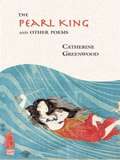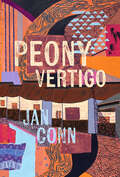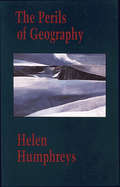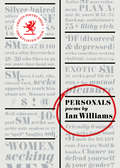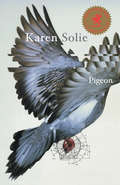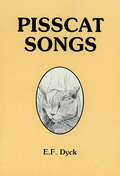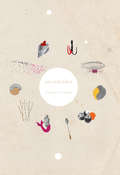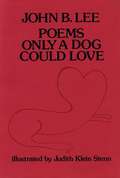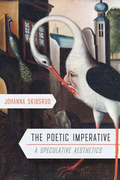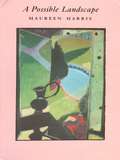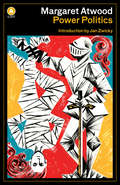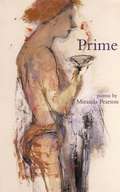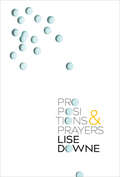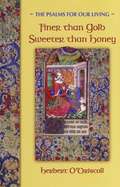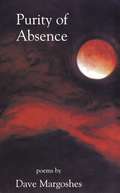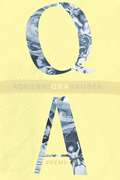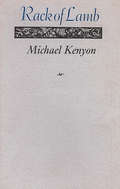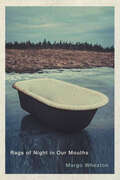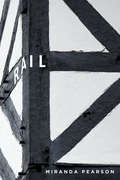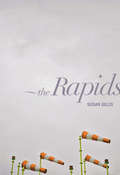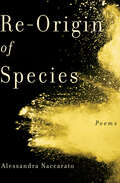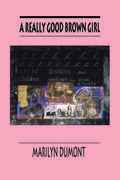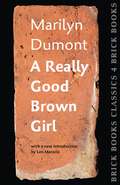- Table View
- List View
The Pearl King and Other Poems
by Catherine GreenwoodNotable Book in the 2005 Kiriyama Prize and longlisted for the 2005 ReLit Awards Catherine Greenwood draws on the stories and legends which surround the development of cultured pearls by Mikimoto, the fabulous Pearl King, to engage a rich array of themes, including the clash between an aesthetics of refinement and nuance, and mass manufacture. With discerning wit and a large range of styles and voices, she holds up each subject for contemplation as though it were a pearl, and explores the sometimes bizarre consequences of an overwhelming rage for beauty. As the seal is strong and breathes air, As the fish is quick and breathes water, So make me, a mermaid strong and quick. Bless me with abalone abundant as mushrooms, Oysters dropping ripe as plums into my palm. Let my births keep me ashore a few days only, Only for a little while let labour make me rest. from "The Diving Girls’ Prayer" When, in other sections of the book, Catherine Greenwood turns her attention to such matters as the still birth of a calf, teeth, moles, or the Shetland Island stone, she does so with the same care for the exact fit of style, the same sharply-angled craft. "The ancient Taoists believed that a pearl was grounded at the soul’s centre, that it took wisdom and clarity to create its essence. Catherine Greenwood’s first collection of poems is proof of that. Here is a new pearl, the beginning of a strand I hope, that will continue to be added to with such depth of field and luminosity." - Don Domanski
Peony Vertigo
by Jan ConnPoems emerging from deep memory and shifting landscapes to joyously engage flora, fauna, and self. In her latest collection, Peony Vertigo, Jan Conn's poetic sensibility disperses and gathers, careens and slides, in and out of relation with the endangered world. Through poems ranging from global to microscopic scales, Conn's beholden, fluid sense of self dissolves into fog and river, and reconstitutes as bright orange newt, prehistoric horse, painter, and mourning daughter. Her voice is vulnerable, ecstatic, and elliptical, a tender exploration of liminal consciousness and the urge to identify with environments in crisis.
The Perils of Geography
by Helen HumphreysIn her third book of poetry The Perils of Geography, Helen Humphreys charts a world that opens under the prodding and promise of language. With the wit and eye for evocative detail which gained readers for both Gods and Other Mortals and Nuns Looking Anxious, Listening to Radios, Humphreys probes the immediacy of now, the intensity of this, the residue of then. Don’t be deceived by the spare appearance; her poems are resonant and full, "all angles and confidence." Light falls slant across them. She maps "what surrounds not what's made still" -- "the moving line." The line she traces connects the pull of memory and moment, open roads and winter aconite, transcendental basements and ornamental shrubbery. In "Singing to the Bees," the ten poem sequence which makes up the second of three sections in Perils, she slips inside folk wisdoms, wears them with an easy grace, all flesh and wit and possibility: dancing shoes, gifted pigs, swarming bees, airplane nuns and spectre ships. These poems make superstition delicious.
Personals
by Ian WilliamsThese are not love poems. These are almost-love poems. Jittery, plaintive, and fresh, these are poems voiced through a startling variety of speakers who continually rev themselves up to the challenge of connecting with others, often to no avail. Ian Williams writes in traditional poetic forms: ghazals, a pantoum, blank sonnets, mock-heroic couplets. He also invents his own: poems that spin into indeterminacy, poems that don’t end. With a deft hand and playful ear, Williams entices the reader to stumble alongside his characters as they search, again and again, for intimacy, for love, and for each other.
Pigeon: Poems
by Karen SolieKaren Solie launched to prominence with her first collection of poems, Short Haul Engine (2001), finalist for the Griffin Poetry Prize and winner of many other awards and citations. She continued her upward trajectory with Modern and Normal (2005), and is now considered one of Canada's best poets. Pigeon is yet another leap forward for this singer of existential bewilderment. These poems are X-rays of our delusions and mistaken perceptions, explorations of violence, bad luck, fate, creeping catastrophe, love, and the eros of danger. Once again, Solie shows that her ear is impeccable, her poetic intelligence rare and razor-sharp.
Pisscat Songs
by E. F. DyckEd Dyck finds that you cannot say "piss" on the radio in Saskatoon. There wasn't very much radio promotion of his book. That's a shame. Everybody should know about the cat Jack and the world Dyck compacts around him in 15 "sonnets."
Placeholder
by Charmaine CadeauProvisional, roaming, obsessed with remnants and deferrals, the poems in Charmaine Cadeau’s second collection navigate flexible and shifting terrains where the speaker’s emotional directness tethers us as we dare to read on. Though Cadeau is capable of some stunning acrobatics—somersaulting mid-line, the imagery defying gravity, the language a series of wows—she isn’t in the business of showing off; instead, she goes subtly beyond the quotidian in search of that which saves the day or ruins the soufflé or makes us all squirm in self-recognition. She dares the extraordinary to become a part of everyday. To read Placeholder is to enter a mesmerizing stream of consciousness response to a world that is rarely in the same spot in the morning as we left it the night before.
The Poetic Imperative: A Speculative Aesthetics
by Johanna SkibsrudThis book aims to expand our sense of poetry's reach and potential impact. It is an effort at recouping the poetic imperative buried within the first taxonomic description of human being: "nosce te ipsum," or "know yourself." Johanna Skibsrud explores both poetry and human being not as fixed categories but as active processes of self-reflection and considers the way that human being is constantly activated within and through language and thinking. By examining a range of modern and contemporary poets including Wallace Stevens, M. NourbeSe Philip, and Anne Carson, all with an interest in playfully disrupting sense and logic and eliciting unexpected connections, The Poetic Imperative highlights the relationship between the practice of writing and reading and a broad tradition of speculative thought. It also seeks to demonstrate that the imperative "know yourself" functions not only as a command to speak and listen, but also as a call to action and feeling. The book argues that poetic modes of knowing - though central to poetry understood as a genre - are also at the root of any conscious effort to move beyond the subjective limits of language and selfhood in the hopes of touching upon the unknown. Engaging and erudite, The Poetic Imperative is an invitation to direct our attention simultaneously to the finite and embodied limits of selfhood, as well as to what those limits touch: the infinite, the Other, and truth itself.
The Poetic Imperative: A Speculative Aesthetics
by Johanna SkibsrudThis book aims to expand our sense of poetry's reach and potential impact. It is an effort at recouping the poetic imperative buried within the first taxonomic description of human being: "nosce te ipsum," or "know yourself." Johanna Skibsrud explores both poetry and human being not as fixed categories but as active processes of self-reflection and considers the way that human being is constantly activated within and through language and thinking. By examining a range of modern and contemporary poets including Wallace Stevens, M. NourbeSe Philip, and Anne Carson, all with an interest in playfully disrupting sense and logic and eliciting unexpected connections, The Poetic Imperative highlights the relationship between the practice of writing and reading and a broad tradition of speculative thought. It also seeks to demonstrate that the imperative "know yourself" functions not only as a command to speak and listen, but also as a call to action and feeling. The book argues that poetic modes of knowing - though central to poetry understood as a genre - are also at the root of any conscious effort to move beyond the subjective limits of language and selfhood in the hopes of touching upon the unknown. Engaging and erudite, The Poetic Imperative is an invitation to direct our attention simultaneously to the finite and embodied limits of selfhood, as well as to what those limits touch: the infinite, the Other, and truth itself.
A Possible Landscape
by Maureen HarrisMaureen Harris’s first volume of poetry evokes “a possible landscape,” where the stories that subtly shape us blend with the moments that we are. Here is an Eden where Eve longs for the serpent’s “green quiver,” his “sibilant caress,” where a snake tires of his lover “wearing/the same skin day-out, day-in.” The poems in the first section of this book are sharp new takes on old stories, at once angry, witty and thoughtful. With grace, compassion and sparkle, the rest of the book explores the self in the world of the late twentieth century, the seeming contradictions of the third world, and the ordinary magic of an evening spent with friends.
Power Politics: Poems (A List)
by Margaret AtwoodA groundbreaking meditation on sexual politics, love, and human tenacity from the world-renowned pioneer of feminist writing and prophetic author of The Handmaid’s Tale, Margaret Atwood.When it first appeared in 1971, Margaret Atwood’s Power Politics startled readers with its vital dance of woman and man. It still startles today, and is just as iconoclastic as ever. These poems occupy all at once the intimate, the political, and the mythic. Here Atwood makes us realize that we may think our own personal dichotomies are unique, but really they are multiple, universal. Clear, direct, wry, and unrelenting — Atwood’s poetic powers are honed to perfection in this seminal work from her early career.
Prime
by Miranda PearsonIn Prime, Miranda Pearsons first collection of poetry, the narratives of female identity, the white wedding, and the enshrined position of the mother are interrogated, using the lyric as a form of cultural critique in an examination and mockery of romantic love and heterosexual relationships. At the same time, the poems constitute an irreverent, lush romp, a celebration of friendship and absurdity. Gritty and darkly humorous, Pearsons verses address modern myths head-on in a world where love watches itself critically and consciously. Everything is unravelled in poems that disentangle pregnancy from motherhood, custody from caregiving, marriage from love, sex from gender, only to weave these concepts back together in startling new patterns. Pearson deliberately trips over the picket fences of proprieties and sensitivities that surround the New Age marriage. The sacred and profane are crossed daily with frankness, toughness, and warmth. In Prime, British humour and psychoanalytic and feminist theory meet under the poets steady gaze.
Propositions and Prayers
by Lise DownePropositions and Prayers, Lise Downe's first book of poetry in nine years, is a collection in two parts: "Propositions" is a series of short poems-as-possibilities, structured by the compression of images and voices to convey an urgency through degrees of incoherence; "Prayers" explores living and language as acts of devotion.These poems blur the boundaries between inner and outer experiences of the self, often subverting expectations and habit in their deconstruction of structure and style. It beautifully portrays humanity's myriad complexities: our various moods and observations, the unpredictable trajectories of our lives—uncertainty, wonder, and surprise, all.
The Psalms
by Herbert O'DriscollThe psalms are among the most sublime poetry in the world, offering us inexhaustible wells of meaning. Herbert O'Driscoll adeptly dips into their sacred depths and draws up sparkling insights to refresh the soul. <P><P>Our contemporary spirits can feel at home in the world of psalms. All of human experience is there - joy and sadness, love and anger, trust and despair. The gift of the psalms lies in their challenge to us; they invite us into dialogue with them and with the God who inspired them. <P><P>The psalms guide us to express our deepest feelings to God, and their response floods the soul with assurance. Justice is done. Healing takes place. Grace is given. Praise for God with Us: The Companionship of Jesus in the Challenges of Life: "God with Us, approached in a spirit of openness and honesty, can be transforming. Its thought is deep but its language is accessible - written with sensitivity and spirituality." -Montreal Anglican
Purity of Absence
by Dave MargoshesIn Purity of Absence, Dave Margoshes explores love in its waxing and waning, the extravagance of its fullness, the agony of its departure. Like an explorer charting new territory, he casts his eye on the rhythms and syntax of love, observing its aspects both quotidian and rare. The poems in this new collection, Margoshes’s first in a decade, chart the ekg patterns of love, not just the mature love between a man and a woman but love for a parent, friends, knowledge, place and, ultimately, life itself.
Q & A
by Adrienne GruberAdrienne Gruber's third full poetry collection, Q & A, is a poetic memoir detailing a first pregnancy, birth and early postpartum period. The poet is both traumatized and transformed by the birth of her daughter. She is compelled by the dark places birth takes her and as she examines and revisits those places, a grotesque history of the treatment of pregnant and birthing women reveals itself.
Rack of Lamb
by Michael KenyonMichael Kenyon's Rack of Lamb is a compelling study in voice. Organized loosely around various foods, the book brings together the voices of several women and a young girl, all from the same community but representing various social and cultural groups, subtly but powerfully joined by major social and political events. The power in Kenyon's book, however, lies not only in his uncanny ability to articulate strongly developed characters in one or two brief passages, but also in his ability to evoke a re-examination of the relationship between the individual, the mundane and the worldly.
Rags of Night in Our Mouths (Hugh MacLennan Poetry Series)
by Margo WheatonSilence in the belly of the breathing house. Night so deep / it’s reaching through rooms as if searching its pockets.Standing in the midst of her childhood home, Margo Wheaton was struck by two things: the extent of the damage caused by her father’s and stepmother’s alcoholism and the life force that pulsed in the once-vibrant rooms and yard – in the abandoned trees, neglected flowerbeds, and gardens her parents had planted and tended for decades.Radiant, grieving, and intensely musical, Rags of Night in Our Mouths is an exploration of human and environmental states of precarity and vulnerability. In the opening suite, Wheaton draws upon her family’s deep roots in the Tantramar Marsh area and constructs a hallucinatory world of fragility, chaos, and searing natural beauty as she writes her own version of Maritime gothic. Employing a variation of the ghazal, a historically Persian form popularized in Canada by the late New Brunswick–based poet John Thompson, she surveys the ruins of her working-class childhood home, a thriving place now ravaged by generational alcoholism and despair. Directed at first toward an absent beloved – a convention of the ghazal tradition – the focus moves in the second suite to the teeming, non-human world of an endangered saltmarsh on a wild shore of the Northumberland Strait bordering Nova Scotia, New Brunswick, and Prince Edward Island. In the book’s closing suite, Wheaton honours a landscape slated to be destroyed and pays homage to “the broken-hearted, the bereaved” who walk the ragged shoreline, struggling to make sense of losses and death.Meditative and beautifully crafted, Rags of Night in Our Mouths calls us to engage passionately with our suffering world.
Rail (Hugh MacLennan Poetry Series #50)
by Miranda PearsonTracks and ley-lines pull us, carry us / past Lindisfarne – or an imagined glimpse / drifting holy in the distance, / another reality running through it. A rail is a track, a support, and a barrier. In this collection, spanning the personal and the political, Kentish pathways lead to London, to Yorkshire, to Faroe, then circle back to the west coast of Canada. An appeal, a railing against, these poems reach for beauty and compassion amidst uneasy global upheaval. Miranda Pearson considers family ties and threads between adult and child, cross-pollinating and subverting credos from Bloomsbury to Brexit, Whitechapel to West Vancouver, the Bible to punk. The long poem "Abacus" explores dyscalculia and ways that numbers and their associations can be a rich source of memory. It also delves into resulting anxieties – navigations and compensations made in response to a learning difference. Through imagery heavily influenced by visual art, other poems in Rail focus on geological elements: how parts fit and dislodge, erode and compress. Ceramics and gemstones, ice and rock are fault lines and stepping stones that act as envoys between the human and the natural world. A tension exists here between art and nature, between art objects and the violent history of colonial curation. Rail tracks the cascade of this duality. Exploring a diasporic connection between England and Canada, Rail is a journey along the brink between high and low culture, balancing on the edge of the awkward and the elegant.
Rail (Hugh MacLennan Poetry Series #43)
by Miranda PearsonTracks and ley-lines pull us, carry us / past Lindisfarne - or an imagined glimpse / drifting holy in the distance, / another reality running through it. A rail is a track, a support, and a barrier. In this collection, spanning the personal and the political, Kentish pathways lead to London, to Yorkshire, to Faroe, then circle back to the west coast of Canada. An appeal, a railing against, these poems reach for beauty and compassion amidst uneasy global upheaval. Miranda Pearson considers family ties and threads between adult and child, cross-pollinating and subverting credos from Bloomsbury to Brexit, Whitechapel to West Vancouver, the Bible to punk. The long poem "Abacus" explores dyscalculia and ways that numbers and their associations can be a rich source of memory. It also delves into resulting anxieties - navigations and compensations made in response to a learning difference. Through imagery heavily influenced by visual art, other poems in Rail focus on geological elements: how parts fit and dislodge, erode and compress. Ceramics and gemstones, ice and rock are fault lines and stepping stones that act as envoys between the human and the natural world. A tension exists here between art and nature, between art objects and the violent history of colonial curation. Rail tracks the cascade of this duality. Exploring a diasporic connection between England and Canada, Rail is a journey along the brink between high and low culture, balancing on the edge of the awkward and the elegant.
The Rapids
by Susan GillisUrgent and precarious, the poems in The Rapids, Susan Gillis’ third collection, take us to places lost and reclaimed: a balcony high over the St. Lawrence River in downtown Montreal, upstream to the Lachine Rapids, and beyond, to landscapes as far apart as Greece and the B.C. coast.
Re-Origin of Species
by Alessandra NaccaratoWinner of RBC Bronwen Wallace Award for Emerging WritersWinner of CBC Poetry PrizeFrom hybrid bodies to shifting landscapes, Re-Origin of Species blurs the lines of the real. These poems journey through illness and altered states to position disability and madness as evolutionary traits; skilled adaptations aligned with ecological change.A lyric contemplation of our relationship to the environment, this book looks at the interdependence of species. Weaving personal narratives with a study of the insect kingdom, it draws parallels between human illness, climate change, and the state of peril in the natural world.
A Really Good Brown Girl
by Marilyn DumontMarilyn Dumont’s Metis heritage offers her challenges that few of us welcome. Here she turns them to opportunities: in a voice that is fierce, direct, and true, she explores and transcends the multiple boundaries imposed by society of the self. She mocks, with exasperation and sly humour, the banal exploitation of Indianness (“there it is again, the circle, that goddamned circle, as if we thought in circles, judged things on the merit of their circularity, as if all we ate was bologna and bannock and lived in teepees”); more-Indian-than-thou oneupmanship (“So, I’m having coffee with this treaty guy from up north … I say I’m Metis like it’s an apology and he says, ‘mmh,’ like he forgives me, like he’s got a big heart and mine’s pumping diluted blood”); and white condescension and ignorance (“The White Judges”). She celebrates the person, clearly observing, who defines her own life. These are Indian poems; Canadian poems; human poems.
A Really Good Brown Girl: Brick Books Classics 4
by Marilyn DumontOn the occasion of the press’s 40th anniversary, Brick Books is proud to present the fourth of six new editions of classic books from our back catalogue. This edition of A Really Good Brown Girl features a new Introduction by Lee Maracle, a new Afterword by the author and a new cover and design by the renowned typographer Robert Bringhurst. First published in 1996, A Really Good Brown Girl is a fierce, honest and courageous account of what it takes to grow into one’s self and one’s Metis heritage in the face of myriad institutional and cultural obstacles. It is an indispensable contribution to Canadian literature.
